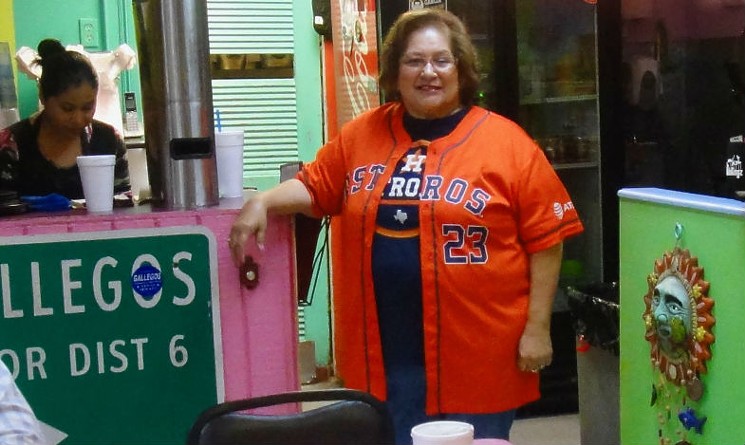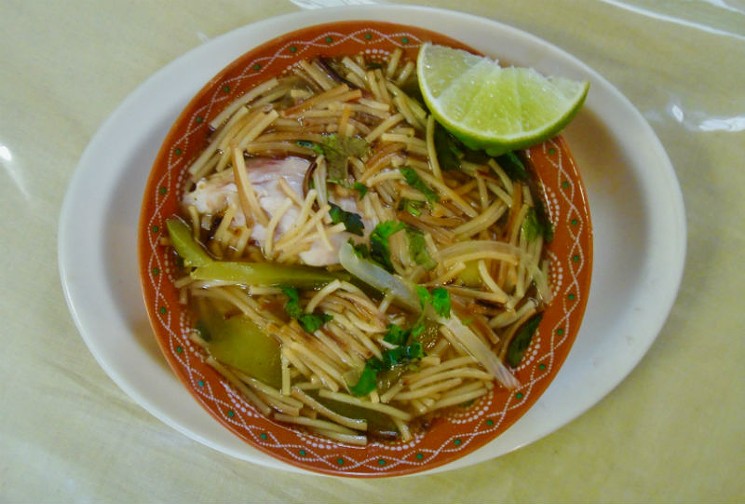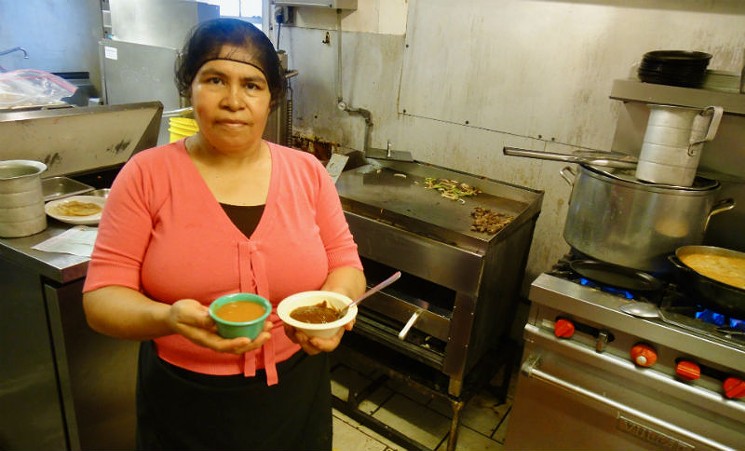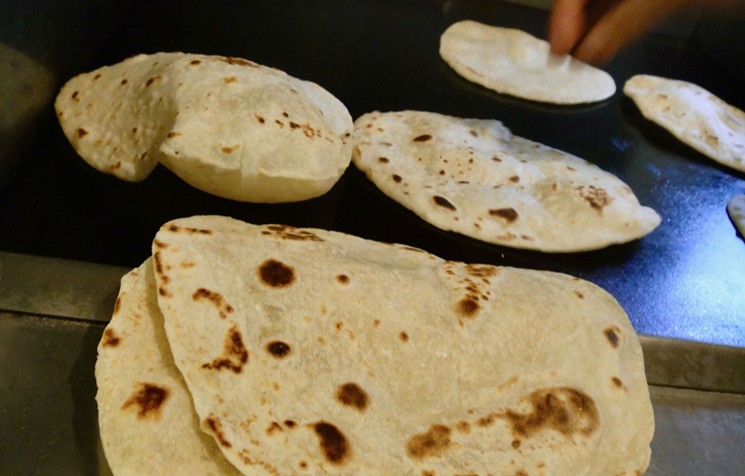(Note: several locations for Happy Lamb in Houston)
Cold Weather Hot Pot.
As I Explore Houston And Discover Interesting Places and Things To Write About
(Note: several locations for Happy Lamb in Houston)
Cold Weather Hot Pot.
This Houston institution slipped by me. I’d never been. I knew that it was historically significant to the max. On previous attempts, it was always too crowded. “Next time”, I would say. But recently, having seen a photo of their puffy taco, I knew that it was a “must”.
Damn, that puffy taco plate was good. The rice and beans that accompanied it were great. As were the tacos. Crunchy. Not those softer, chewier, thick masa ones that SA is known for. A tad thicker than the ones at the (now closed) beloved Fiesta Loma Linda.
And, I saw that caldo de menudo is a daily feature. Not just on weekends.
This is a breakfast and lunch place. It closes at 2:00 pm.
Adán Medrano, culinary historian and author of two superb books on the cuisine of Mexicano cuisine in Texas, wrote the following for The Houston Press, part of articles he did as he explored Mexican restaurants on Navigation. Here is a link to the Houston Press article:
The Houston Press - Adán Medrano
Both of Adán's books are available at the River Oaks Bookstore and also online from Amazon (support local businesses as your first priority though)
He wrote:
"Doña María Mexican Café serves the type of breakfast tacos that are at the heart of traditional Mexican American home cooking. The cafe is one in a six-cluster of restaurants on Navigation that reveal the original, indigenous culinary traditions of Houston.





John writes: "Many thanks to my beautiful friend Belize Love (Raimey), who will one day again be preparing her incredible Belizean dishes for Houstonians if my wishes are granted. Raimey suggested I try sweet little The Marigold Cafe (7676 Hillmont), located within an office building that looks non-descript from the outside but is of a very unique design inside. The cafe is run by a wife/husband team, and the dishes feature a delightful Caribbean flair, from the spices used on the fries (frozen, but they are sensational with the spices coating them), the curry in several of the dishes, and offerings such as "Island Spice" pancakes and waffles made with cinnamon and nutmeg.
John writes:
"When Richi and I are deciding where to go stuff our faces on weekend mornings, the incredible Vietnamese dish bò né (steak and eggs with so much more) is usually part of the discussion. We recently found what so far is our favorite bò né in Houston, at the appropriately named Bò Né Houston (11694 Bellaire). We've been to at least a couple other spots with the same name, but this newest one on Westheimer is the one we like the most so far.
John writes:
"Sometimes, you hear a name, and it sort of calls out to you. So it was with the burger trailer at the Galleria Food Truck Park off Chimney Rock just south of Westheimer (2829 Chimney Rock) called BunSlut.
Trip Advisor Travel Forum for Galveston. Here is some great information that I pulled from a Trip Advisor Forum for Galveston. The links are embedded so you will need to do a copy and paste to grab them. Created by Trip Advisor destination expert "TexasGal"
is very small island and very unique in what it has to offer tourists who come for one day or a week. That said it does require some homework on internet IMO.
Adjacent to The Port is the famous Strand downtown. It is blocks of shops, restaurants, art galleries, museums, boutiques and more. It is a delight for cruise patrons to experience before or after their cruise.
The Strand has two hotels.
Tremont and Harbor House
I have stayed at Harbor House and it was very nice stay. That said, The Tremont is a highrise hotel with a gorgeous rooftop bar and a little more upscale.
Here are 3 websites for visitors and they will give you great info:
http://www.downtowngalveston.org/index.html
https://galvestonislandguide.com
https://www.galveston.com/visitorscenter/
Galveston Trolley and Bus System:
https://www.galvestontrolley.com
Video of Strand. There are many more if you do a search: https://www.youtube.com/watch?v=o0dqAaS4bPE
FYI, there are webcams positioned on popular beaches, The Strand, Moody Gardens, Seawall Blvd. and the Port. They show what is happening 24 hours a day. You can even watch the cruiseships arrive and depart on these cams
Webcams: https://www.visitgalveston.com/webcams/north-galveston-webcam/
The Island has a trolley and here is their link:
Island Trolley Service: https://www.galvestontrolley.com
I am a huge fan of The Strand and all it's shops, museums, art galleries and eateries. It has it's own webpage. Google the Museums that are in The Strand. Great for families!
Walking tour video of The Strand:
https://www.youtube.com/watch?v=o0dqAaS4bPE
A must visit is a candy and ice cream shop called LaKing's Confectionery and it opened in 1920. For seafood I like Katie's. There are also a couple of popular restaurants for gumbo fans in The Strand.
Two recommendations when you go out onto the street parallel to the beach called Seawall Blvd. There is a huge gift shop called Murdochs that is on pillars out over the water.
Then across Seawall Blvd. from Murdochs is Galveston's grand, elegant Hotel Galvez. I hope you will take the time to walk over and view the interior or have lunch (?). It is like being in the Great Gatsby movie !!!!!!
Grand Galvez Hotel: https://www.grandgalvez.com
Murdochs Gift Shop on Seawall Blvd.: https://galvestonislandguide.com/murdochs-galvestons-oldest-and-best-loved-gift-shop/
Food on Seawall Blvd.:
The Spot is casual and good shrimp poboys with seating on large deck overlooking ocean.
Mario's, I hope, still has their weekday Italian Food buffet (?)
Gaido's is upscale seafood that opened in 1911
Do a search on Moody Gardens events and Schlitterbahn Waterpark on site.
IMO, The Galveston Duck Tour is a must. See their webpage and YouTube videos.
Also, for families is the Pleasure Pier complex near Murdocks on Seawall Blvd. (See Videos)
The last recommendation I have is in The Strand. It is a candy and ice cream shop called LaKing's Confectionery and it opened in 1920. A must visit.
Enjoy!
I set about to create a Facebook page to have and to share with links and information on Puebla and Oaxaca, for friends who might be planning a vacation there. Here is a link to that page.
Link to Oaxaca and Puebla Information
I set about to create a Facebook page to have and to share with links and information on Mexico City, aka CDMX, for friends who might be planning a vacation there. Here is a link to that page.
Link to Facebook Mexico City Information
I began collecting Tex-Mex restaurant menus and memorabilia several decades ago, with the hopes that I could preserve this history. From the early 1900's to the 1970's, as I came across menus and other interesting stuff. Above is a link to the Facebook page where I have "housed" this collection for you.
Selected Art Environments in United States
Selected Art Environments in Europe
Selected Art Environments in Asia & Africa
Selected Art Environments in Latin America
Selected Art Environments in Canada
Selected Art Environments in Czech Republic
Selected Art Environments in Finland
Selected Art Environments in Spain
Selected Art Environments in Poland
Selected Art Environments in Italy
Selected Art Environments in France
I only recently learned about yakamein. It came out of the interaction of New Orleans Creole and Chinese cultures with a dash of Cajun thrown in. Noodles, topped by a braised and seasoned oxtail, soy sauce forward, veggies and an egg. That oxtail. Not your "where's the meat at?" grocery store oxtail. These are cut larger and very meaty.
The very excellent 1929 Po-Boy at Lyric Market at 411 Smith Street. Free parking in the Iconic Lyric Garage for up to 2 hours with your receipt. Chefs Monica and Garland are knocking it out of the ballpark imho. Every time I come here for lunch, I leave with a big smile on my face.
Everything that I have had here has tasted great. High points? The yakamein, the barbecue shrimp, the gumbo, and the po-boy. Pictures follow: